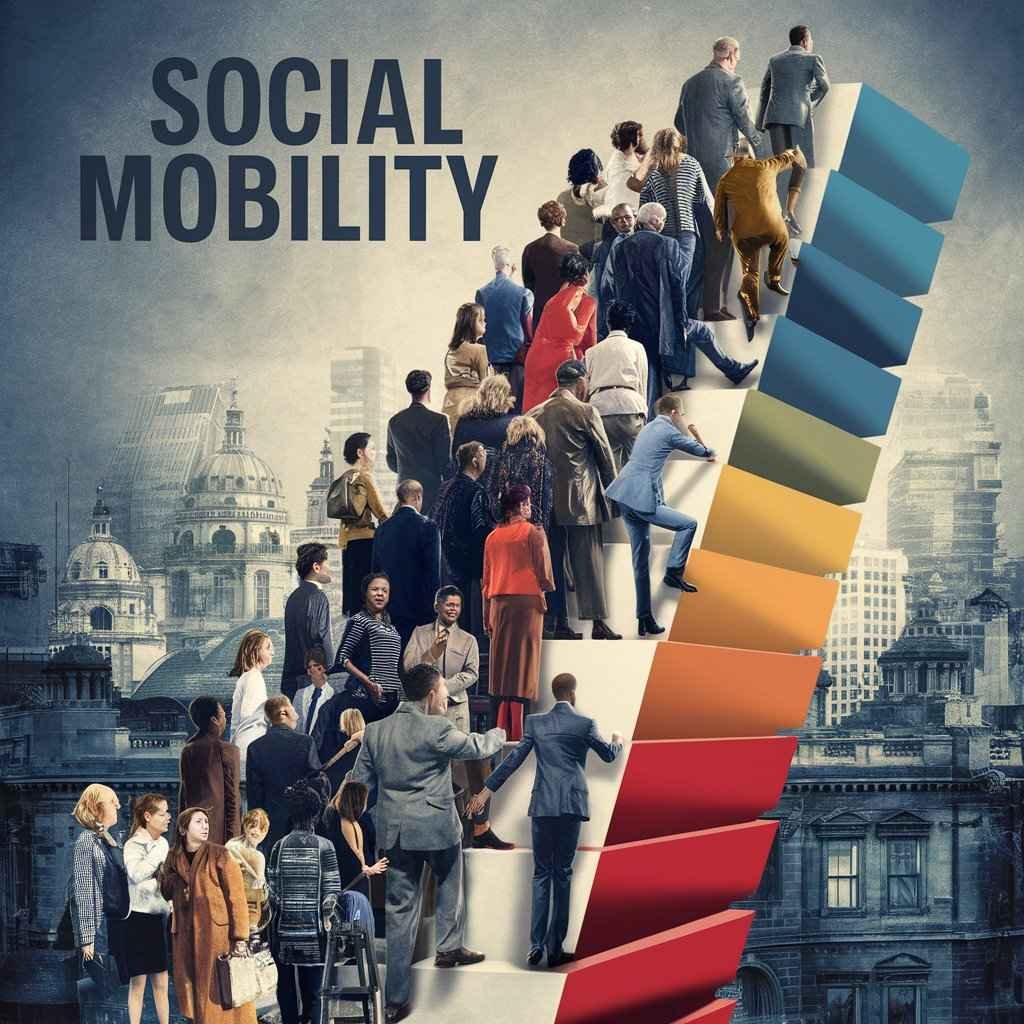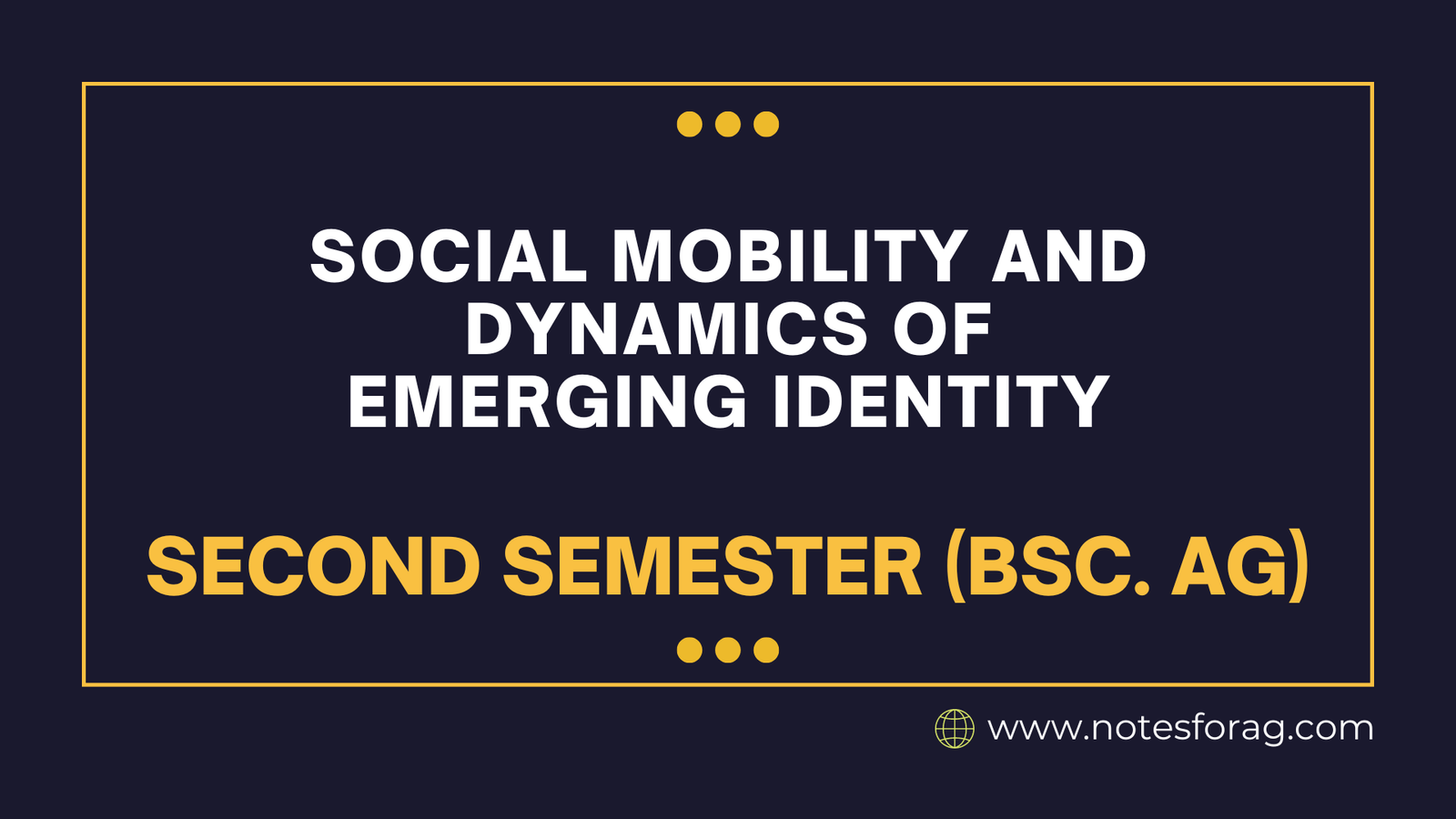Social mobility, or the capacity of people or groups to move up or down a social hierarchy, has a big impact on how emerging identities develop. One’s social mobility is shaped by various factors such as education, family history, economic policies, and social networks, which in turn affect opportunities and life paths. Emerging identities are simultaneously shaped by personal experiences, globalization, technology, and cultural influences. Social mobility and identity formation are intertwined, as people navigate upward or downward social movement and their identities change to reflect changes in socioeconomic status and social environment.
Table of Contents
Understanding Social Mobility

Social mobility, which is a crucial aspect of modern society, is the capacity of individuals or groups to move up or down the social hierarchy. It includes a range of activities, the two main types being changes that occur within the same social level and upward or downward vertical mobility. One’s socioeconomic status can be changed through it, which can impact overall social stratification and inequality. This is why it is important.
Since vertical social mobility directly affects a person’s or a group’s social class, it is frequently the type that is discussed the most. For example, achieving higher education, advancing in one’s career, or succeeding as an entrepreneur can all lead to upward mobility. On the other hand, negative events like job loss or economic downturns can lead to downward mobility. Less frequently discussed is horizontal mobility, which refers to changes within the same social class, such as moving to a new location or changing jobs within the same industry without significantly altering one’s socioeconomic standing.
Factors Influencing Social Mobility
- Education: One important factor influencing it is having access to high-quality education. Better employment prospects and higher pay are frequently the results of higher education.
- Economic Policies: It can be improved by implementing policies that support economic expansion, job creation, and equitable pay. Social welfare programs and progressive taxation may also be important.
- Family Background: An individual’s social mobility may be impacted by their family’s socioeconomic standing. Higher income families are frequently able to offer greater opportunities for education.
- Social Networks: Partnerships and connections can lead to employment, mentoring, and other resources that support social mobility.
- Discrimination and Inequality: It can be hampered by structural injustices and discrimination based on gender, race, or other characteristics.
Dynamics of Emerging Identity
Emerging identity refers to the development of a person’s sense of self in relation to their social environment. This concept is dynamic and can change over time due to various influences.
- Cultural Influences: Values, beliefs, and norms are shaped by culture, which in turn shapes identity. Identity can grow more intricate and multidimensional as societies become more multicultural.
- Globalization: Identity can be impacted by exposure to diverse cultures and ideas through globalization, which can result in more hybrid or cosmopolitan identities.
- Technology and Social Media: These two factors are essential to the development of an identity. They give people a platform to express themselves and connect with others, which has an impact on how people view themselves and are perceived by others.
- Political and Social Movements: Taking part in these kinds of movements has the power to mold identity by establishing a feeling of purpose and community.
- Personal Experiences: Identity development is a lifelong process that is influenced by a variety of experiences, such as education, travel, and interpersonal relationships.
- Economic Status: A person’s opportunities and self-perception are impacted by their financial situation, which in turn can have an impact on identity.
Interaction Between Social Mobility and Emerging Identity
The relationship between social mobility and emerging identity is intertwined. As individuals experience changes in their social status, their identities can also evolve. For example:
- Upward Mobility: A person’s sense of identity may be influenced by new cultural practices, values, and social networks that they adopt as they move up the social ladder.
- Downward Mobility: On the other hand, losing status and having a shift in one’s self-perception can result in identity struggles when someone moves down the social hierarchy.
- Social Mobility and Community Identity: As a result of their changing socioeconomic circumstances, communities that experience collective social mobility may create new identities for themselves.
Comprehending the complexities of both individual and collective experiences within a dynamically shifting social milieu is facilitated by an understanding of the dynamics of social mobility and emerging identity.
Frequently Asked Question(FAQ)
What is social mobility?
The ability of people or groups to move up or down a social hierarchy is known as social mobility. This movement can be upward or downward, and it is frequently quantified over time by adjustments to social status, occupation, income, and education.
What factors influence social mobility?
Important elements include family history, social networks, economic policies, availability to high-quality education, and the existence of inequality and discrimination.
Related Articles

